Gaerne Icestorm Winter Boots 1.0 review
Warm and supportive, but a short cuff makes them better for dryer days
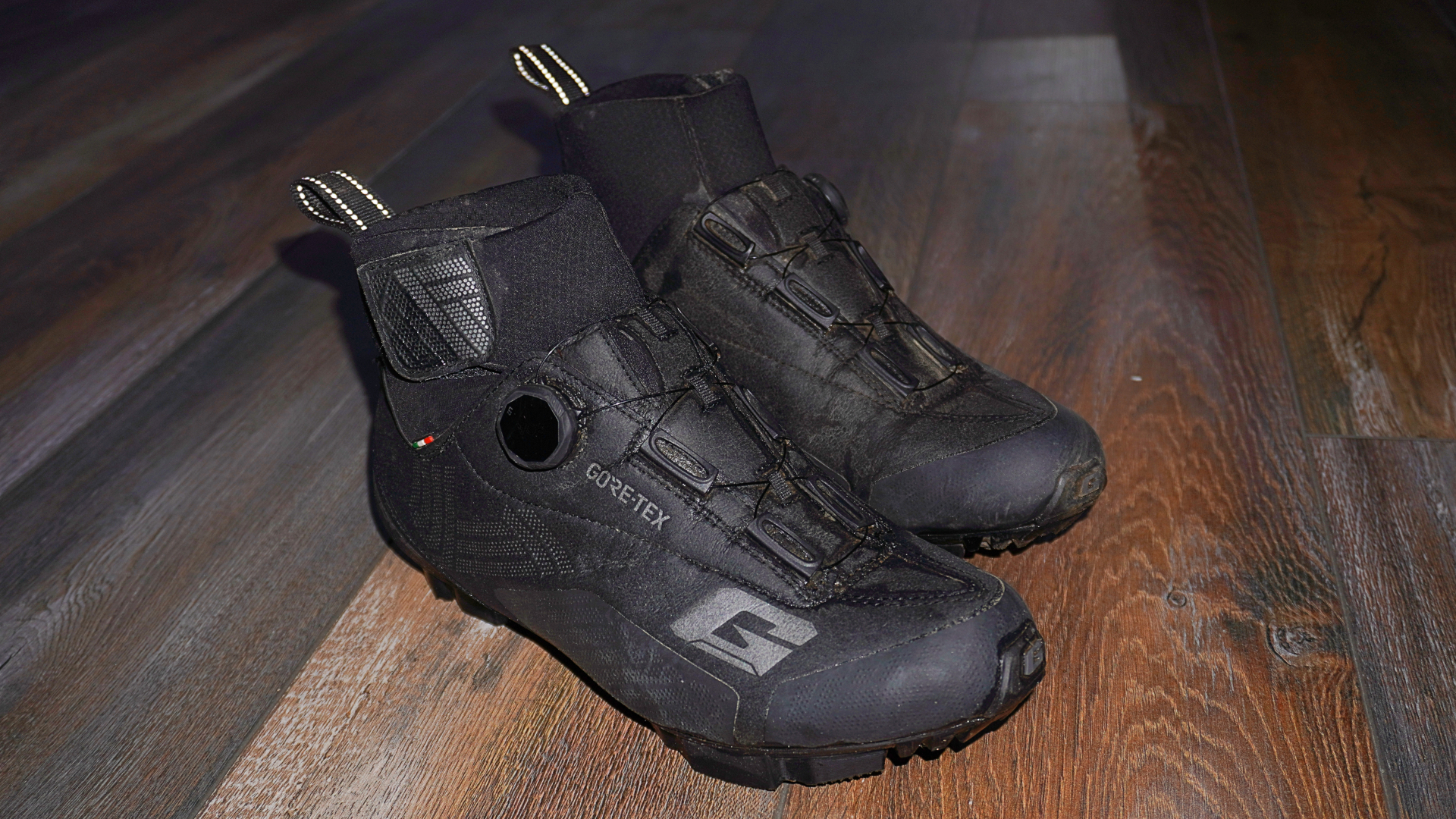
Gaerne’s Icestorm 1.0 winter boots provide incredible warmth – particularly for their low bulk – while a well balanced pedaling platform and functional closure system make these a great set of shoes. The one downside is that the ankle cuffs are quite short and stiff, with a tendency to leave a gap at the bottom of the pedal stroke, which lets water in. For cold and dry conditions, they are great. But for the cold and wet, considering their price, you’ll probably be better off with a different set of shoes.
-
+
Very warm
-
+
Just the right about of stiffness
-
+
Easy to reach Boa IP-1 dial
-
+
Reflective detailing
-
-
Ankle cuff a little low and gappy
-
-
Cable routing for closure system is fiddly
You can trust Cycling Weekly.

It doesn’t matter whether you’ve got the best bib tights or winter jacket, if you’re riding breezy summer racing shoes through the dead of winter, you’re going to get cold feet. Blocking up the air vents with tape and donning a set of overshoes will help to some extent, but really, there’s no substitute for a set of dedicated winter cycling shoes.
Italian brand Gaerne offers its boots in both a two-bolt cleat style (for gravel, MTB, and those who want an easier time clipping in when road cycling) and a separate model designed for three-bolt road cleats, allowing you to run the same pedals on your winter bike when it’s cold and when it’s mild.
For the added versatility, we opted for the two bold version. The main difference beyond just the cleat fitting is that the two-bolt version is rated seven out of 12 on Gaerne’s sole stiffness scale (which curiously starts at six), while the three-bolt version is a little stiffer with its carbon sole and comes in at eight of out 12.
The construction: Gaerne Icestorm Winter Boots 1.0 review
To keep the wet and cold from seeping in, the boots’ upper uses a Gore-Tex Duratherm membrane which, in turn, is laminated to a layer of hollow-fibre insulation. Around the ankle, a stretchy Gore-Tex Rattler cuff with a Velcro closure is designed to stop the water coming in from the top.
The sole sees further optimisation against the cold, including a reflective aluminium core helping to seal the heat in. Whereas the three-bolt cleat sole is made from carbon fibre for a stiffness rating of eight out of 12, the two-bolt cleat sole uses a combination of Nylon and fibreglass for a slightly more flexy construction that’s good for seven out of 12 on Gaerne’s scale.
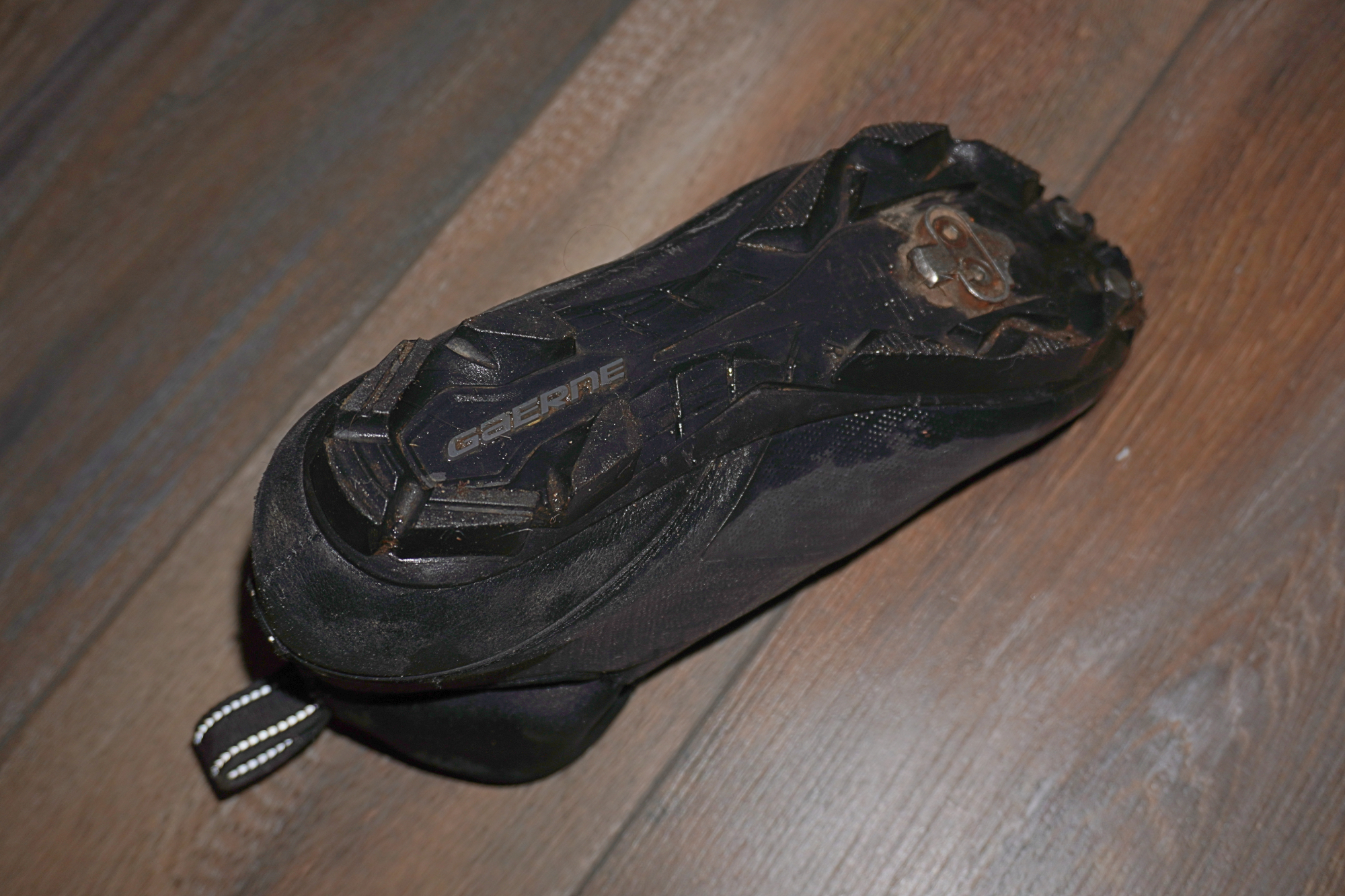
On the underside of the shoe, there are markings to help set your cleats up accurately and the tread is quite aggressive and fairly tacky for better grip in muddy and rocky conditions. There are more heavily treaded and grippier soles out there, but these are still well above par. At the front there’s the option to mount studs for scaling the grassy banks of CX courses (although generally you would want a lighter, racier shoe for this).
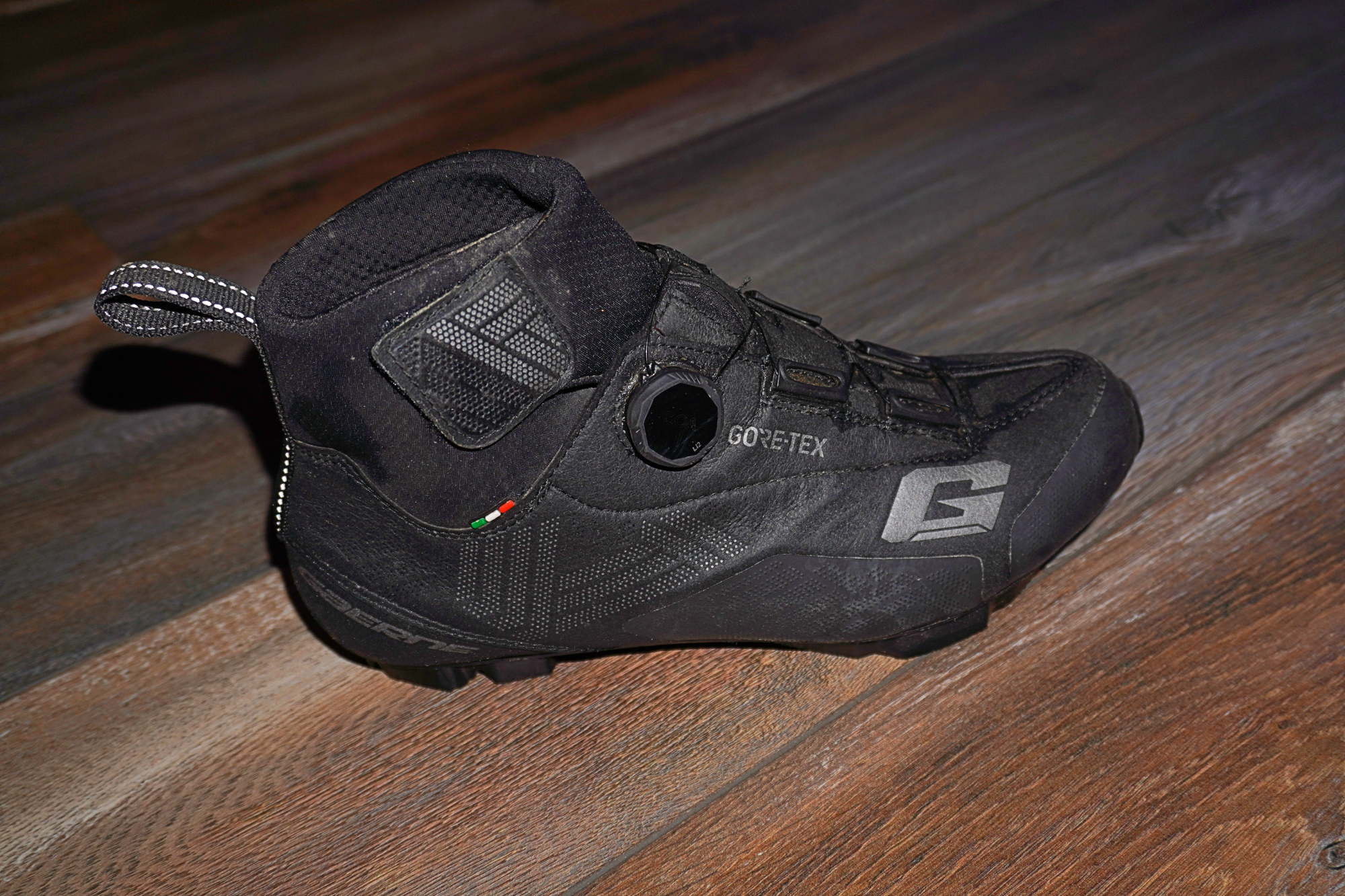
The binding is taken care of by a single Boa IP-1 dial, which is the model that allows you to both tighten and loosen the pressure by millimetre increments. It's very useful for finding the balance between a secure fit but not going so tight as to reduce circulation to your toes.
Rounding things off, there’s plenty of reflective detailing and a reassuringly hefty tag on the back of the shoes to help with pulling them on and off.
The ride
Gaerne’s Icestorm 1.0 is almost frustratingly close to completely nailing what it is to be a great winter boot.
The insulation is brilliant in just how warm it makes the shoes – yet without adding an unacceptable level of bulk. They feel less cumbersome than even race shoes when paired with certain overshoes. Right down to the very low single digits (Celsius) my toes were still kept perfectly toasty and in only mid-weight merino socks.
The stiffness of the sole hit a great balance too. On long, cold, winter rides, a super stiff sole isn’t really necessary nor wanted, but at the same time, an overly flexy pedalling platform can feel like a constant drain of inefficiency.
With the Icestorm 1.0s, I was able to put in hard efforts up technical off-road climbs and those sharp little kickers, which are more punishing when taken slowly, without feeling like I was wallowing or wasting energy. But at the same time, neither did I feel jarred or punished on longer rides taking in more rocky terrain.
Once you’ve used a Boa IP-1 dial, it’s hard to go back, and they’re arguably even more important on a winter boot than a summer shoe. As with all riding, it’s never pleasant to feel like the shoe is too loose, with the floppy, disconnected feeling it gives. Equally, if a shoe is too tight, then it can reduce the blood flow and result in painfully cold feet.
With the one dial in an accessible location, it was easy making those quick, on-the-fly adjustments – even with heavily gloved fingers. That said, the routing of the lacing did mean having to hook it back over the tongue each time I pulled the shoes on, which was a bit of a faff.
Unfortunately, the ankle cuff was neither tall nor stretchy enough to keep a close seal against my bib tights. Now, with the way bib tights typically tuck into a winter boot, there is naturally only so much you can expect with regard to water entering the shoe. (As an aside, it would be better if tights were designed to go over the shoes so water would simply run down and off, but I don’t know of any with a decent chamois).
Even so, there are still winter boots that do a much better job at this than the Gaerne Icestorm 1.0, which open up a gap at the front of the ankle at the bottom of the pedal stroke, allowing water to pour into the shoe.
Considering everything else, they still make excellent winter boots for cold and dry conditions. But given the price, it’s hard to justify buying these over a model which matches the warmth, stiffness and closure system and does a better job of keeping the water out.
Value
At £234.99 / $292.49 the Gaerne Icestorm 1.0 winter boots are at the upper end of price bracket. 45NRTH Ragnarok shoes provide a similar level of protection, but are cheaper at £195.00 / $195. Likewise, Lake’s MX 146 winter boots have a much taller cuff and come in cheaper again at £200.00 / $259.99.
Verdict
The one downside is a pretty major one. The stiff ankle cuff is also quite low and, at the bottom of the pedal stroke, it has a tendency to leave a gap that lets water in. That said, the level of warmth the shoes provide is phenomenal – particularly considering the low overall bulk.
Likewise, the sole of the shoes is well balanced between comfort and efficiency, while the retention system is effective and easy to adjust on the move. Especially considering the price, these are hard to recommend above the competition for wet and cold riding. But if your winter riding keeps to mainly the cold and dry, then these are a great option.
Specs
- Weight: 469g (per shoe, size 43)
- Sizes: 39, 40, 41, 42, 43, 44, 45, 46, 47, 48 (EU)
- Contact: www.gaerne.com
FAQs
What shoes should I wear for winter cycling?
It’s perfectly possible to wear the same shoes when cycling in the winter as you wear when cycling in the summer. Blocking up the air vents with a bit of tape and donning a set of overshoes will go a long way towards keeping you warm and dry.
That said, overshoes can be a bit of a pain to pull on and it’s perfectly possible to wear a set out after a winter of heavy riding. For a more durable, easier to put on, and more effective solution, getting a set of dedicated winter cycling boots is a great upgrade.
How do I keep my feet warm for winter cycling?
There are many tricks for keeping your feet warm when cycling. Taping up the vents on your shoes and using a set of overshoes are the most basic. Putting foil underneath your insole and wearing plastic bags on your feet are other, more rudimentary solutions.
But the best and most effective – although most expensive – is getting a set of dedicated winter cycling boots. Designed specifically for the task at hand, they’re warm, durable, and easier to pull on and off than a set of overshoes.

Thank you for reading 20 articles this month* Join now for unlimited access
Enjoy your first month for just £1 / $1 / €1
*Read 5 free articles per month without a subscription

Join now for unlimited access
Try first month for just £1 / $1 / €1
Get The Leadout Newsletter
The latest race content, interviews, features, reviews and expert buying guides, direct to your inbox!

After winning the 2019 National Single-Speed Cross-Country Mountain Biking Championships and claiming the plushie unicorn (true story), Stefan swapped the flat-bars for drop-bars and has never looked back.
Since then, he’s earnt his 2ⁿᵈ cat racing licence in his first season racing as a third, completed the South Downs Double in under 20 hours and Everested in under 12.
But his favourite rides are multiday bikepacking trips, with all the huge amount of cycling tech and long days spent exploring new roads and trails - as well as histories and cultures. Most recently, he’s spent two weeks riding from Budapest into the mountains of Slovakia.
Height: 177cm
Weight: 67–69kg
-
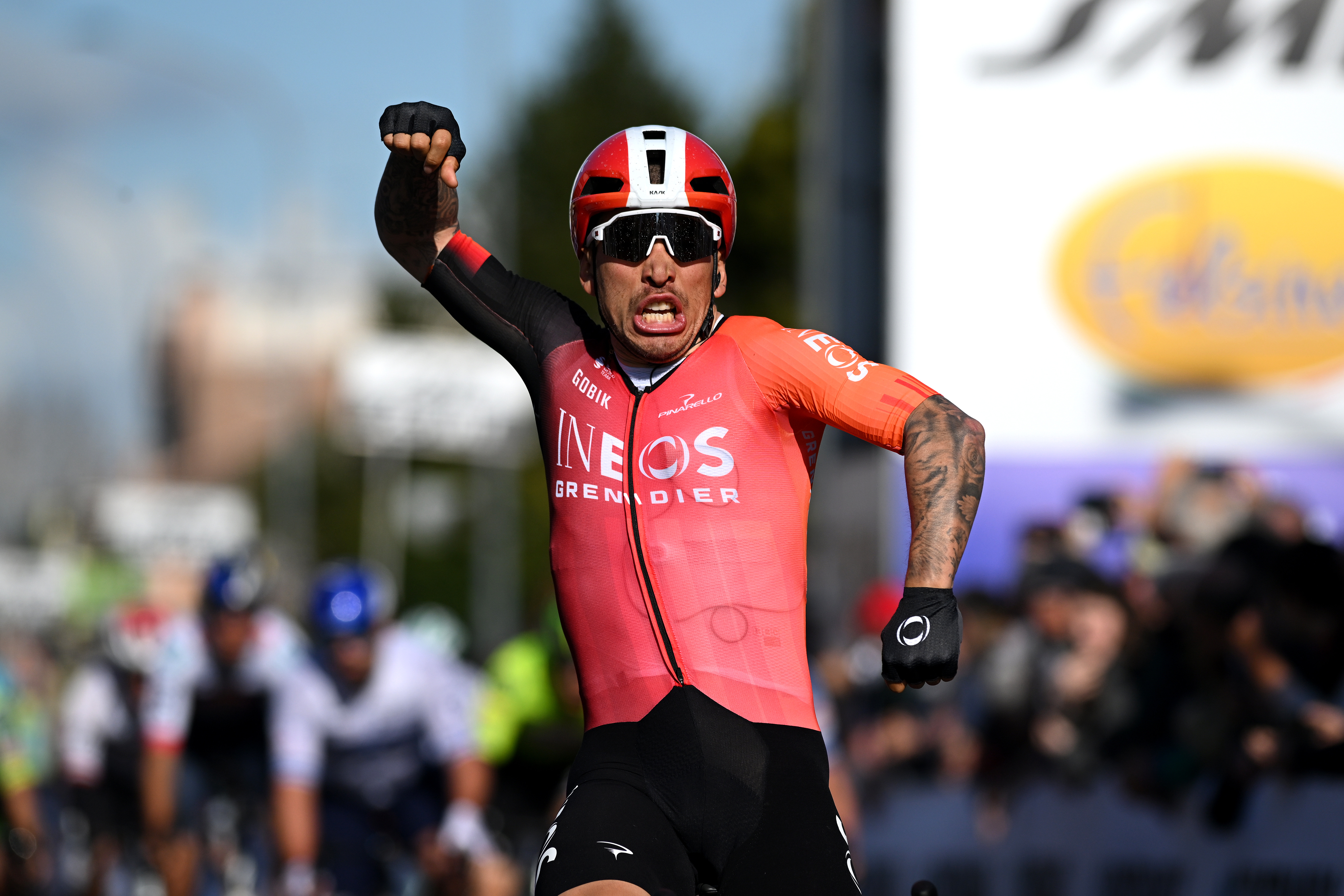 'It can really push me along' - How a velodrome comeback is making Caleb Ewan faster on the road
'It can really push me along' - How a velodrome comeback is making Caleb Ewan faster on the roadAustralian says he'll "definitely" continue track work after rekindling passion
By Tom Davidson Published
-
 'I've worked a lot on my sprint' - Kristen Faulkner plots unpredictability on racing return
'I've worked a lot on my sprint' - Kristen Faulkner plots unpredictability on racing returnOlympic champion looking forward to "exciting challenge" of continuing to outfox bunch
By Tom Davidson Published
-
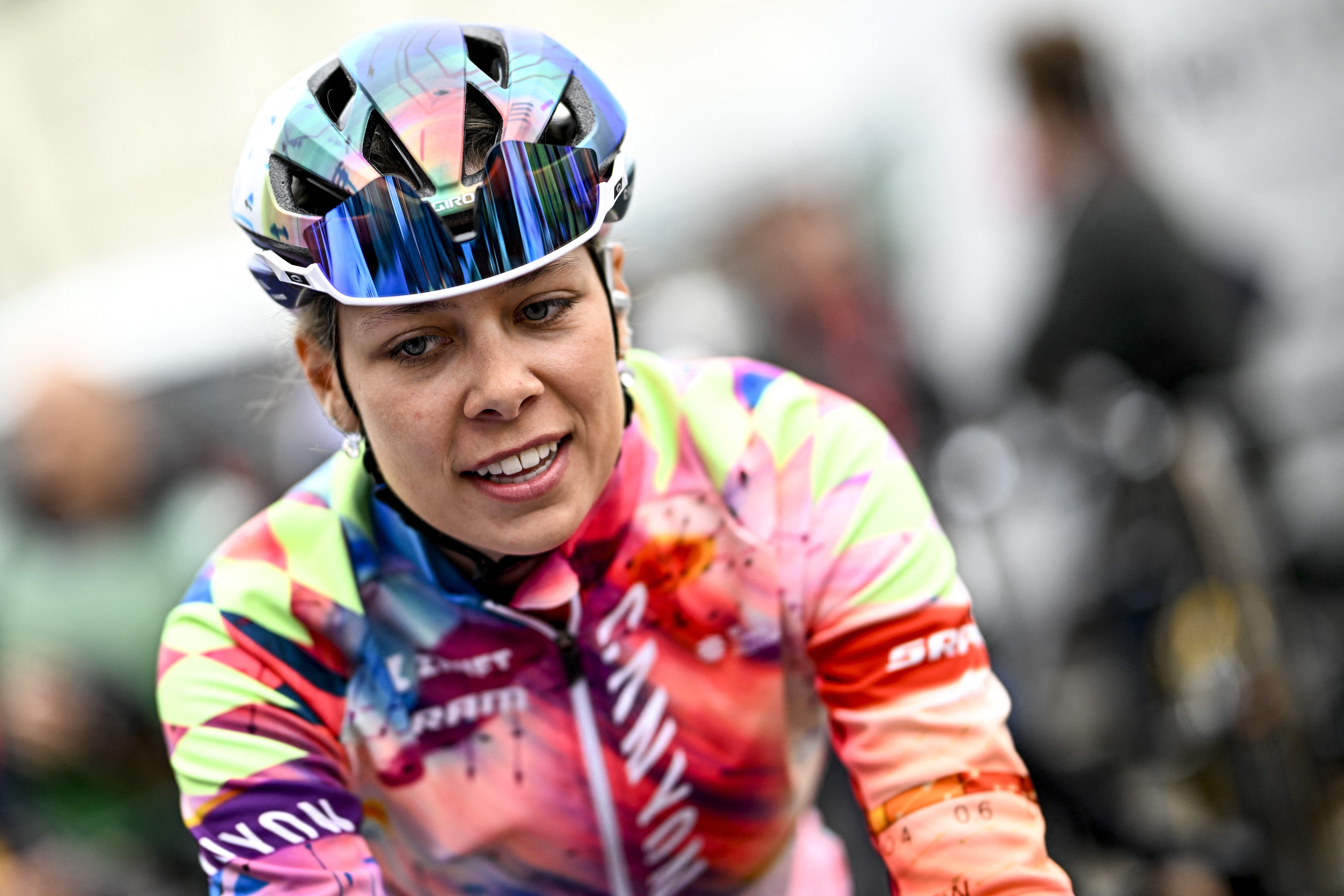 'This is a fresh start' - Belgian rider returns to professional cycling after two year anti-doping ban
'This is a fresh start' - Belgian rider returns to professional cycling after two year anti-doping banShari Bossuyt to ride for AG Insurance-Soudal from June
By Adam Becket Published